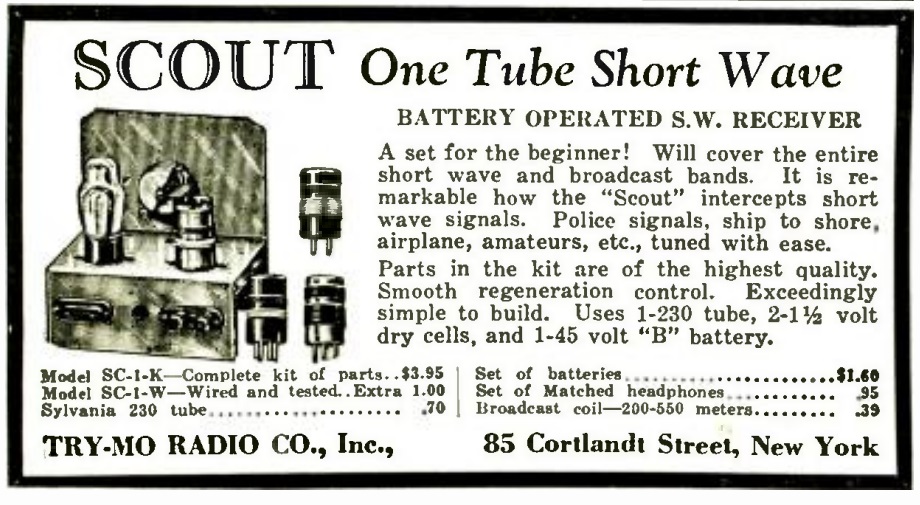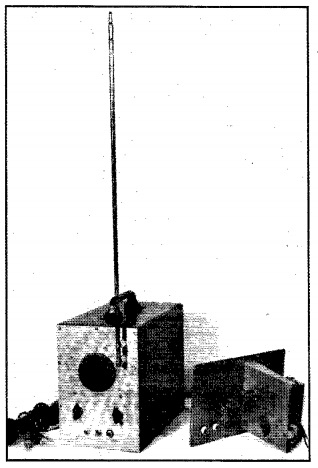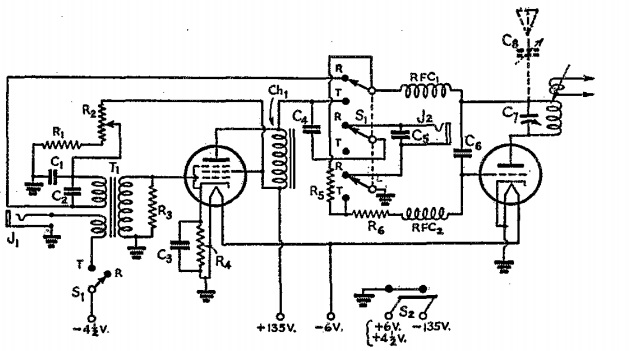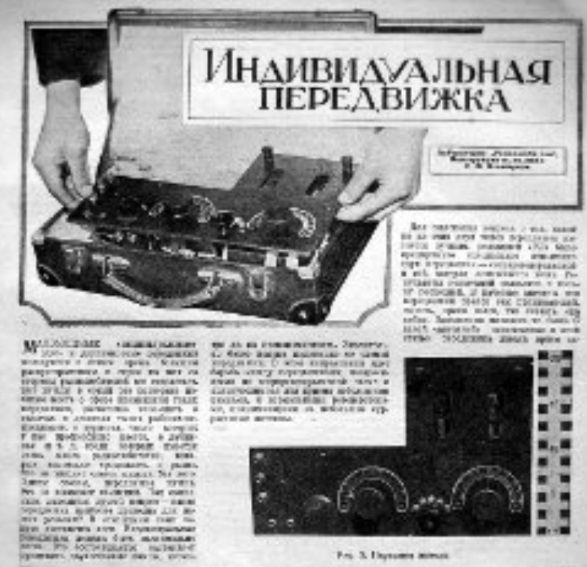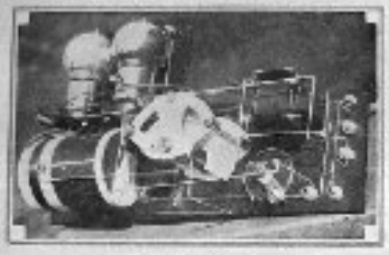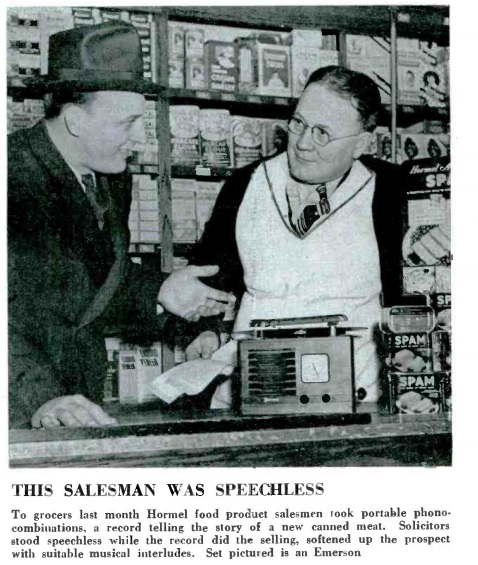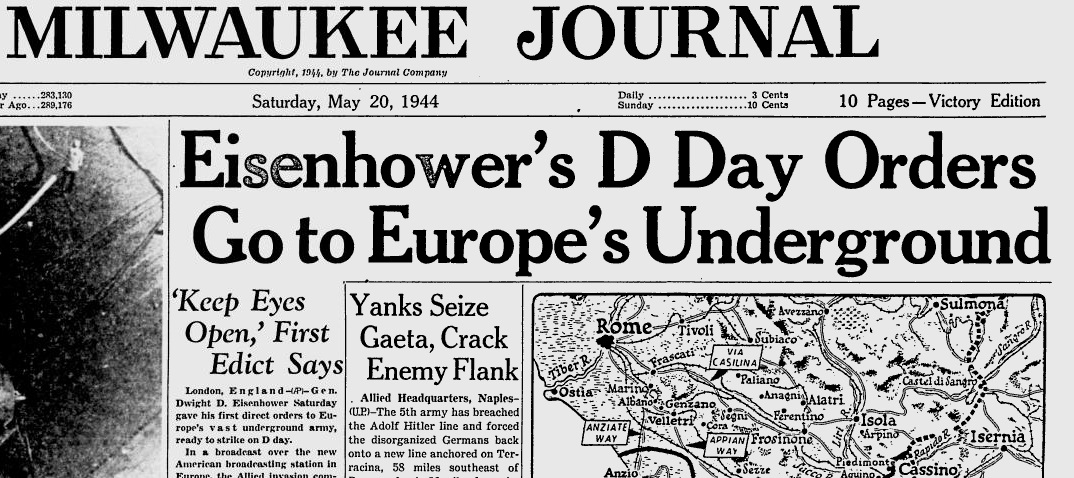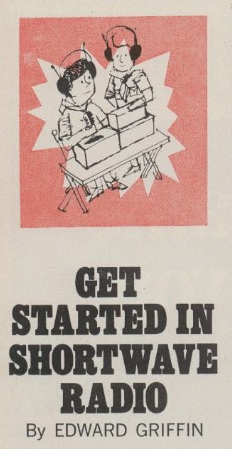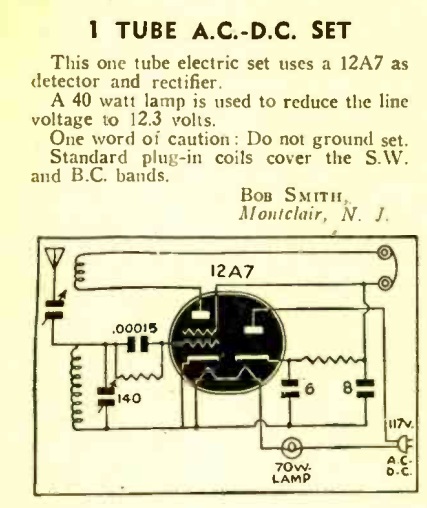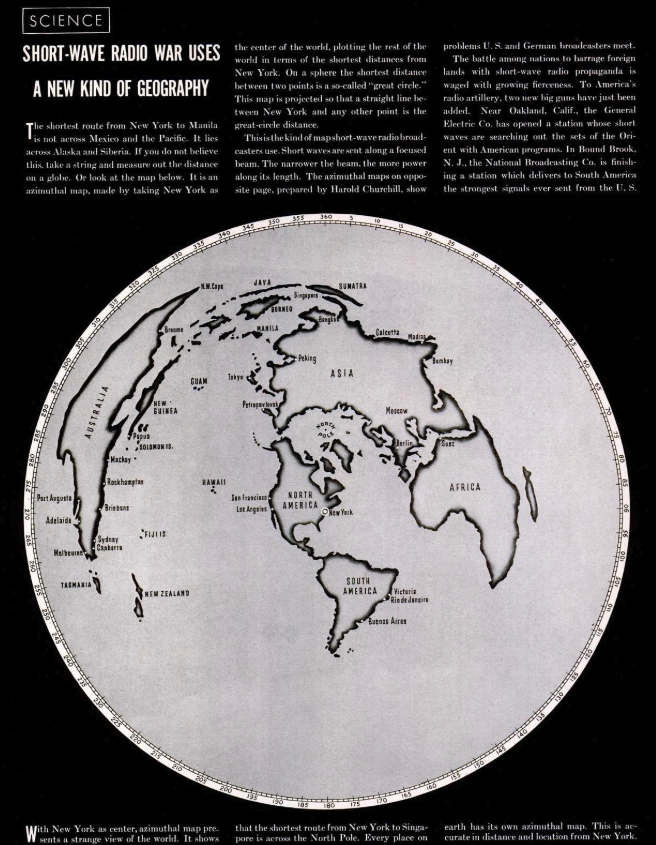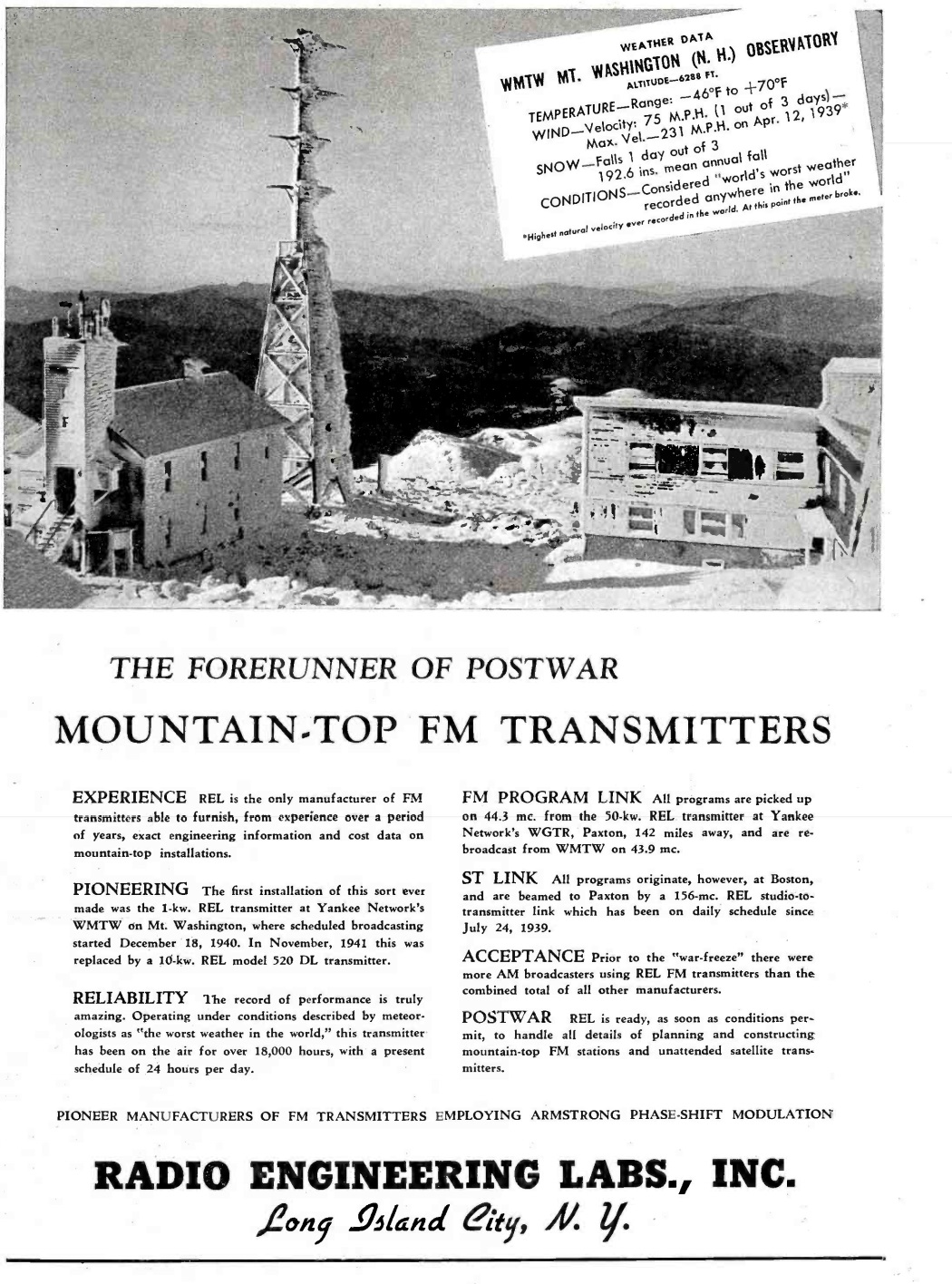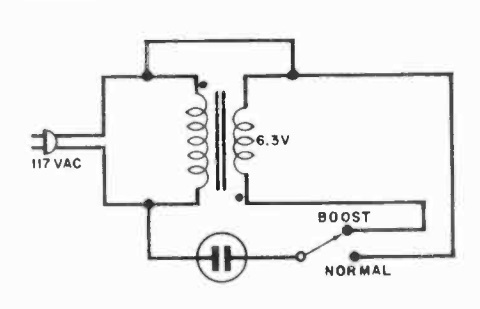 This was by no means a new idea at the time, but the May 1979 issue of Popular Electronics shows a simple way to boost your line voltage. It employs a six-volt filament transformer wired so that it becomes an autotransformer, and the voltages on both coils add. So if you start with 120 volts, you wind up with 126. As the accompanying text explains, you might need to use some trial and error. If you wire it up and the voltage goes down by six volts, then you need to reverse the secondary windings.
This was by no means a new idea at the time, but the May 1979 issue of Popular Electronics shows a simple way to boost your line voltage. It employs a six-volt filament transformer wired so that it becomes an autotransformer, and the voltages on both coils add. So if you start with 120 volts, you wind up with 126. As the accompanying text explains, you might need to use some trial and error. If you wire it up and the voltage goes down by six volts, then you need to reverse the secondary windings.
While they are not common, 6 volt filament transformers are certainly not unobtainium, and you can get them from Amazon at this link:
If you need a slightly heavier duty version already assembled, then you can’t go wrong with an adjustable autotransformer (commonly known as a variac) like this one:



